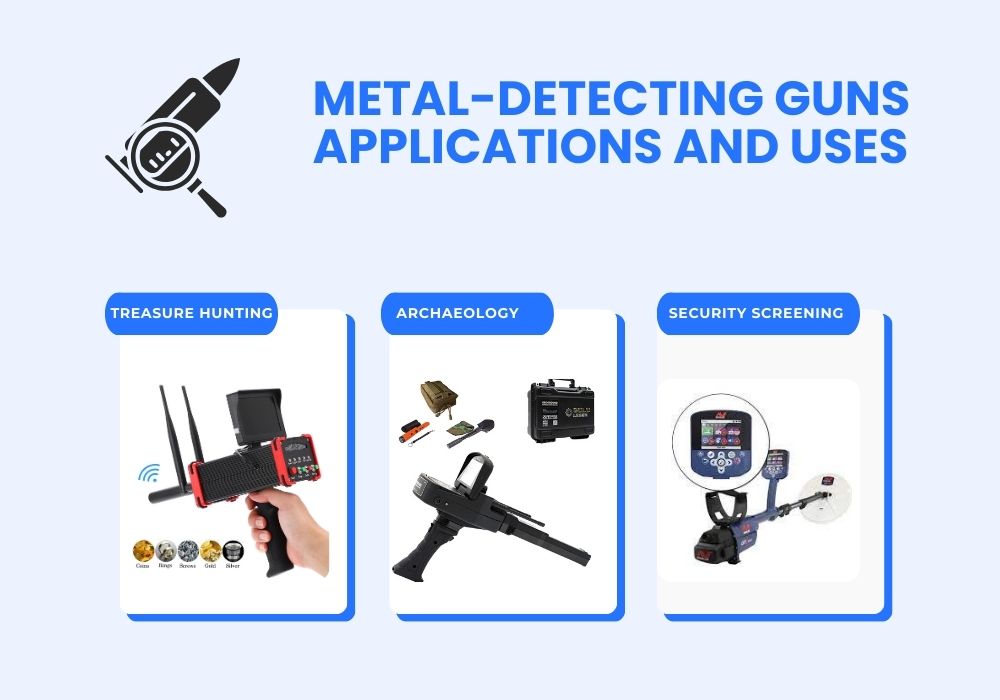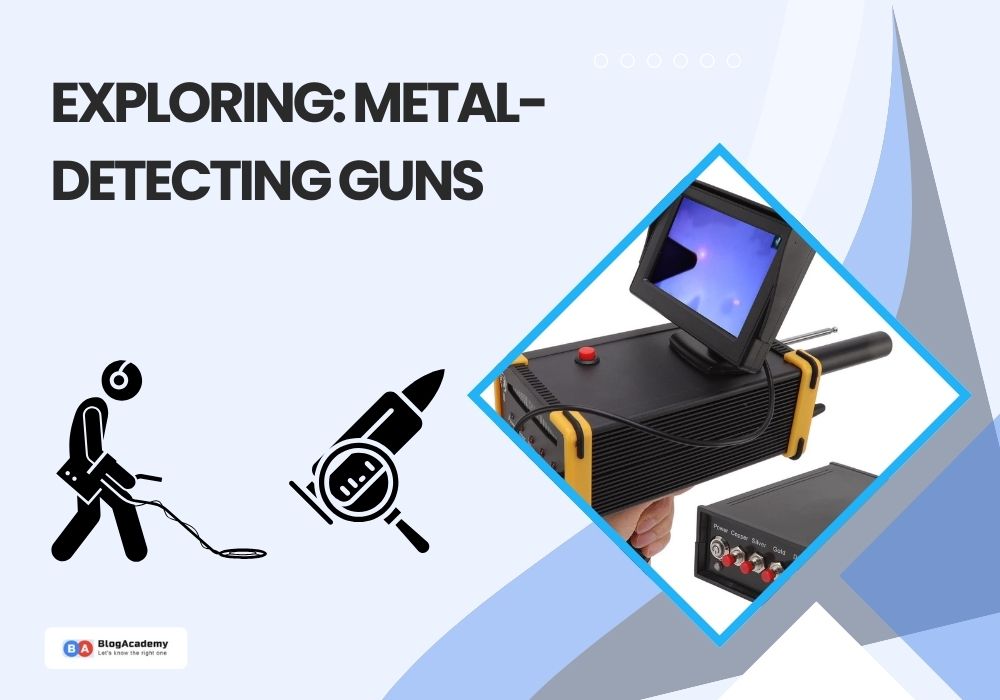Metal-detecting guns, often referred to as metal detectors, have become indispensable tools for hobbyists, treasure hunters, and professionals seeking hidden artifacts or valuable items beneath the earth’s surface.
These devices are marvels of technology, employing scientific principles to detect and identify various metals buried in the ground. In this comprehensive guide, we’ll delve into the world of metal-detecting guns, exploring their mechanisms, uses, and the excitement they bring to enthusiasts worldwide.
Understanding Metal-Detecting Guns
At their core, metal-detecting guns are electronic devices designed to locate metal objects underground. They function based on electromagnetic induction, a fundamental principle in physics.
A typical metal detector consists of a few key components:
- Control Box: The brain of the detector, housing the circuitry and controls.
- Search Coil: Emits and receives electromagnetic signals. It’s usually located at the base of the detector.
- Shaft: Connects the control box to the search coil.
- Stabilizer and Handle: Provides stability and comfort during use.
The Role of Guns in Metal Detecting
In some cases, firearms have been customized or repurposed to assist in metal detecting. One common adaptation involves attaching a small-caliber gun to a metal detector, typically to retrieve detected objects buried deeper underground.
The idea is to use the firearm to create a hole or loosen the soil in a controlled manner, allowing easier access to the detected item. Instead of using traditional digging tools, enthusiasts may employ this method to expedite the retrieval process, particularly when dealing with hard or rocky soil.
How Do Metal-Detecting Guns Work?
When turned on, the metal detector generates a magnetic field through the search coil. When this field encounters a metallic object underground, it creates a magnetic disturbance. This disturbance induces an electric current in the metal object, which generates another magnetic field. The detector then detects this secondary field, alerting the user to the presence of metal.
Types of Metal Detectors
Metal detectors come in various types, each tailored for specific purposes:
- Very Low Frequency (VLF) Detectors: Most common for hobbyists. They use two coils to create a magnetic field and detect metallic objects.
- Pulse Induction (PI) Detectors: Ideal for deep-seated objects or highly mineralized soil. They send short pulses into the ground, making them effective in challenging terrains.
- Beat Frequency Oscillation (BFO) Detectors: Simplest and least expensive. They’re suitable for beginners but less effective in discriminating between different types of metals.
Metal-Detecting Guns Applications and Uses

Metal-detecting guns have a wide array of applications:
- Treasure Hunting: Enthusiasts seek coins, jewelry, relics, and other valuable items buried in parks, beaches, or historical sites.
- Archaeology: Professionals use them to unearth historical artifacts, aiding in archaeological research and discoveries.
- Security Screening: They’re employed in security checks to detect metallic objects that could pose a threat.
Tips for Successful Metal Detecting
Achieving success in metal detecting requires skill, patience, and knowledge. Here are some essential tips:
- Research and Planning: Study the area you plan to detect. Historical maps, local records, and geological surveys can be invaluable.
- Learn Your Detector: Familiarize yourself with your specific detector’s settings and features.
- Practice, Practice, Practice: Regular practice improves your skills in identifying signals and distinguishing trash from treasure.
- Respect the Environment: Always obtain permission before detecting on private property, and fill any holes you dig.
Safety Concerns and Ethical Considerations
The integration of guns with metal detecting raises numerous safety concerns. Firearms inherently pose risks, and combining them with a hobby that involves digging in public spaces can potentially lead to accidents or misunderstandings. Safety protocols, including proper handling and storage, must be diligently followed to prevent mishaps.
Moreover, the ethical aspect of using firearms in metal-detecting contexts is a point of contention. Responsible metal detecting emphasizes preserving historical sites and artifacts, ensuring minimal disturbance to the environment. Using guns could potentially cause more damage than traditional digging tools if not handled with extreme care and precision.
Legal and Ethical Considerations
Before embarking on a metal-detecting adventure, it’s crucial to understand and adhere to legal and ethical guidelines. Many places have regulations governing metal detecting to protect historical sites, private property rights, and the environment. Always obtain necessary permits and respect local laws and regulations.
Conclusions
Metal-detecting guns have revolutionized the way we explore and discover buried treasures and historical artifacts. Their versatility, coupled with advancements in technology, continues to attract hobbyists and professionals alike. Whether it’s unearthing a piece of history or finding a lost valuable, the excitement and thrill of using a metal detector are unparalleled. So, grab your detector, head out, and embark on your treasure-hunting adventure!



